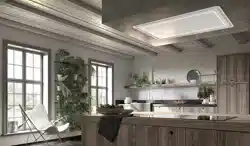Loading ...
Loading ...
Loading ...

5
ALL WALL AND FLOOR OPENINGS WHERE THE RANGE HOOD IS INSTALLED MUST BE SEALED.
This Range Hood requires at least 35" of clearance between the bottom of the Range Hood and the cooking
surface or countertop. This hood has been approved by UL at this distance from the cooktop.
Consult the cooktop or range installation instructions given by the manufacturer before making any cutouts.
MOBILE HOME INSTALLATION The installation of this Range Hood must conform to the Manufactured
Home Construction and Safety Standards, Title 24 CFR, Part 3280 (formerly Federal Standard for Mobile Home
Construction and Safety, Title 24, HUD, Part 280).
Attention: This hood has been engineered to minimize electromagnetic interference (EMI) originating
from the consumer's home power source. However, in some home application, ambient EMI and
excessive EMI from other electronic sources can compromise the reliability of the remote control.
Please speak with your Faber Distributor about an optional spare part to further reduce EMI from
home sources.
• Venting system MUST terminate outside the home.
• DO NOT terminate the ductwork in an attic or other enclosed space.
• DO NOT use 4" laundry-type wall caps.
• Flexible-type ductwork is not recommended.
• DO NOT obstruct the ow of combustion and ventilation air.
• Failure to follow venting requirements may result in a re.
WARNING
!
VENTING REQUIREMENTS
Determine which venting method is best for your application. Ductwork can extend either through the wall or the roof.
The length of the ductwork and the number of elbows should be kept to a minimum to provide efcient performance. The
size of the ductwork should be uniform. Do not install two elbows together. Use duct tape to seal all joints in the ductwork
system. Use caulking to seal exterior walls and ceiling space opening around the cap.
Flexible ductwork is not recommended. Flexible ductwork creates back pressure and air turbulence
that greatly reduces performance.
Make sure there is proper clearance within the walls and ceiling space for exhaust duct before making cutouts. Do not
cut a joist or stud unless absolutely necessary. If a joist or stud must be cut, then a supporting frame must be constructed.
WARNING - To Reduce The Risk Of Fire, Use Only Metal Ductwork.
CAUTION-Toreduceriskofreandtoproperlyexhaustair,besuretoductairoutside–Donotventexhaustair
intospaceswithinwallsorceilingsorintoattics,crawlspaces,orgarages.
Cold Weather installations
An additional back draft damper should be installed to minimize backward cold air ow and a nonmetal-
lic thermal break should be installed to minimize conduction of outside temperatures as part of the vent
system. The damper should be on the cold air side of the thermal break. The break should be as close as
possible to where the vent system enters the heated portion of the house.
Loading ...
Loading ...
Loading ...
